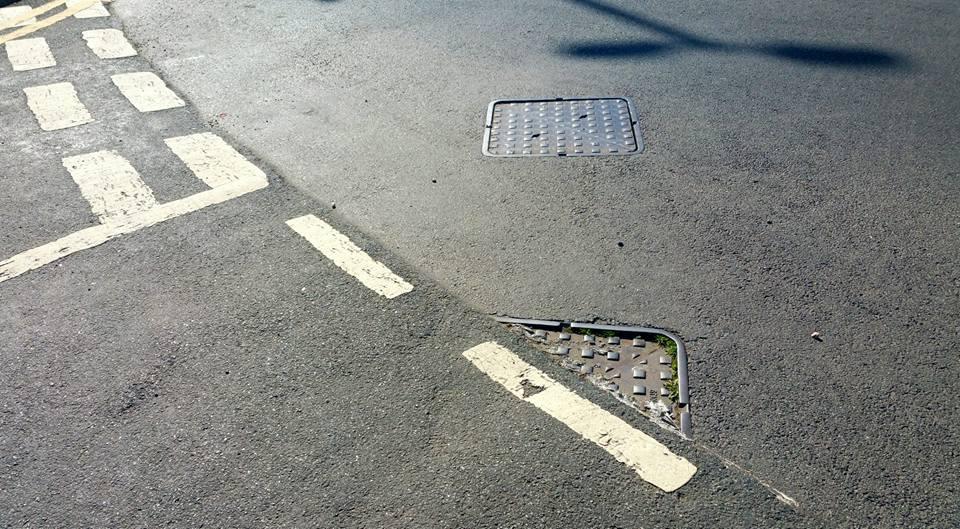We can all think of examples of design – whether it be website design or product design – where the designers clearly forgot (or ignored) the needs of the user. The form (the look of the thing) has completely eclipsed the function (the usability of it). It looks great, but you can’t use it.
The Apple Magic Mouse 2 has received a lot of attention in this regard. It’s a lovely thing, until its battery starts to run down; then you have to upend it and plug the power cable into the base. At which point it’s about as fit for purpose as a tortoise rolled onto its back.
True, the mouse takes a matter of minutes to charge up, so this certainly fits into the category of ‘First World Problems’ but, it still interrupts the workflow. And, when one is paying the thick end of £70 for a mouse, is it too much to expect to be able to charge it and use it at the same time?
Form ever follows function
The architect Louis Sullivan famously wrote “form ever follows function”, back in 1896, and every architecture and design student has been taught that ever since.
A key part of this principle is that the designer must consider the function of this project to be more important than the established precedent of previous, similar projects. So, an important part of the Form Follows Function dictum is that Form Does Not Follow Precedent.
This, then, might explain why there are examples (so very many examples) of objects being re-designed simply to make them different – and not to make them better. Once Microsoft had reached the pinnacle of Mac-level usability with Windows 7, did it really have to then go one huge leap further – and throw all that away with Windows 8? In trying to design a UI that worked identically on both laptop and phone, they ignored the fact that people use laptops and phones in very different ways. What works fine with thumb and index finger on a phone – liking posts and swiping right – doesn’t help you when you’re writing essays at college or doing your business accounts.
They didn’t think (enough) about the users.
Let’s put this in web-design terms: if you design your UI without reference to the likely UX, you are unlikely to produce software which is easy and intuitive to use. You are, in essence, ignoring the needs of the end user. If people can’t use the thing you are creating for them, you are failing at the most fundamental level.
You can’t widget all the people all the time
It isn’t possible to design a widget (I’m using ‘widget’, here, as a generic term for any gadget, device, app or doohickey that ever needed designing for mere mortals to employ) that suits all of the people all of the time.
Until such time as they can mass-produce genetically identical people, we human beings will stubbornly continue to be annoyingly, eccentrically different. Some people are tall, others short, some people will have experienced widgets like yours before, others will be first-timers. People will have different needs and abilities; different interests and skills.
Try to design a can opener that works equally well for left and right-handed people, and you’ll realise that all design is a process of compromise between what the user wants and what is physically, financially or technically possible for the designer to deliver.
The committee stage
Back in the 1960s, the comedian Allan Sherman created ‘Peter and the Commissar’, a parody of Prokofiev’s ‘Peter and the Wolf’, whereby the music has to go through a committee stage. Thanks to the input of the committee, the music ends-up being ‘improved’ from the timeless classic we were taught at school, to a formulaic bossa nova.
As Sherman rhymes, at one point:
“We’ve all heard the saying, which is true as well as witty,
That a camel is a horse that was designed by a committee”
There isn’t a designer out there whose blood doesn’t run cold when they hear that their design is being ‘passed by the steering group’.
This is because we humans – as willfully individual as we continue to be – perceive things very differently. Show a website to ten people and they’re seeing ten different websites, because they’ve lived ten different lives and formed ten different personalities. They’ll be having ten different days and be in ten different frames of mind.
Add to that, if they use the site, they will immediately have ten different experiences.
All experience is subjective, existing in the mind of the experiencee. So UX is an internal, often emotional, response to your UI. You have to accept that (until such time as you can plug straight into the mind of the user, bypassing their personality entirely) not everyone will ‘get’ what you’ve done. You have to decide how many users you’re willing to lose.
The inability to accept that you can’t create the same experience, the same understanding, in all users, is why committees fail at design.

Passing the baton
Another issue is brought about by the way that the same person – or same team – is not always responsible for the entire planning and manufacturing process.
If Team B fails to understand the instructions or intentions of Team A, then they will not do what Team A expects. That’s simply a problem of communication and can be addressed through better systems.
But then there is the sheer stubbornness of human nature. If the constant flow of internet memes is anything to go by, this becomes particularly apparent in building work.
If the plans say to build a balcony on a wall with no windows, or attach a fire escape to a wall with no doors, a certain type of jobsworth builder will do as they’re told – without double checking – and cheerfully move on.
After all, guv, we was only followin’ orders.
This situation can come about through an understandable lack of sympathy among the outdoors-come-rain-or-shine builders towards the problems of the designers in their air-conditioned offices. But there is also a lack of empathy among either group for the professionalism of the other.
This is why it’s important that designers spend time with the people who will bring their designs to life. It helps the people at the manufacturing end feel more involved in the decision-making. It helps the designers keep their feet more squarely on the ground.
Forgiving the fail
Human nature is also the fuel that ignites social media scandals.
In this age of instant infamy, any unguarded and unwise comment can travel the world in seconds – gleefully spread by people basking in the schadenfreude of watching another celebrity career in freefall.
Design fails (such as the Magic Mouse with which we began) are welcomed as a platform whereby the powerless can, supposedly, speak truth to power – by sticking the metaphorical boot in.
Yet, some design fails are greeted with considerable patience and understanding – and this seems to come from a sense of brand loyalty.
Fashion designers enjoy an almost unique cult of personality. Red carpet celebrities are asked “who are you wearing”, as though the fashion designer’s personality and their products were one and the same thing. This gives a rarified upper echelon of designers a pre-eminence and dominance unlike any other field of contemporary design – a power which they are only too happy to exploit. It doesn’t matter how unwearable the shoes, how unfeasible the frock, how monumental the price – brand loyalty and the drive for conspicuous consumption will win out.
The Lotus Elise is another good example of this. Devastatingly beautiful to look at, with a ferocious engine under the bonnet, one of the car’s key selling points (along with all of the Lotus cars which preceded it) is its road-hugging low-profile. This means that the seat of the driving chair is a scant few inches above the road, and the roof of the car – at its highest point – is just 45 inches above the road – much, much lower than any normal road-car.
Presumably designed for slim, sylph-like models to get in and out of with flexible ease; the well-fed middle-aged men who can actually afford to buy the thing, are less graceful in their ingress and, particularly, egress.
Such was the problem, there are several YouTube how-to videos on the best way to get into and out of a car! One would be forgiven for thinking that, if you’re old enough to drive, you’re probably sophisticated enough to negotiate your way round a car door. Seemingly not.
Yet, the Lotus is so loved by petrol-heads, that you will barely find a discouraging word. Everyone clearly knows there’s a problem, but no-one seems to mind.
On good form
Very few designs or designers have achieved the level where the market accepts their every notion, however impractical, with rapturous adoration. Most designers, by contrast, have to earn the respect of the user with each new model, iteration and update.
And you do this through collaboration. And not through the committee stage!
At the very least, the designer should collaborate with the user. This can be done through Alpha and Beta Testing, followed by a lot of note-taking and amend-making.
When things go wrong in web design or product design – it’s rarely going to be because the designer wished it so. Nor is it likely that the people following the design want to do a bad job.
Instead, it is far more likely that a poor design gets to market because the initial brief was misinformed (or, at least, misjudged) or the communication between departments wasn’t sufficient to the task. It could be that the wants and needs of the user was misunderstood, and better market research was needed.
In other words: they didn’t think it through.

Comments
Please remember that all comments are moderated and any links you paste in your comment will remain as plain text. If your comment looks like spam it will be deleted. We're looking forward to answering your questions and hearing your comments and opinions!